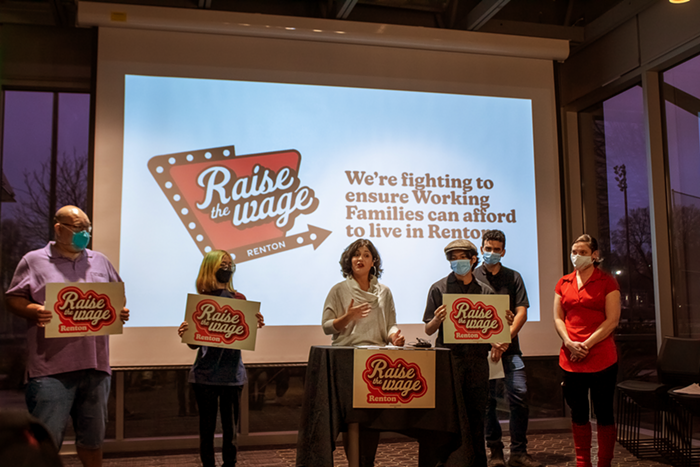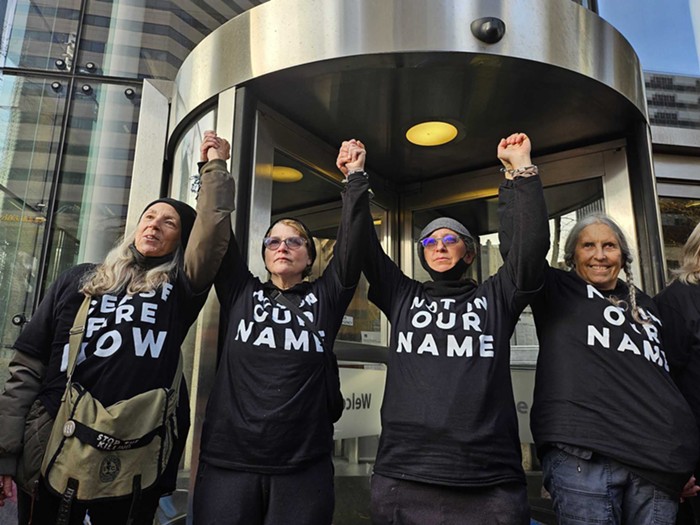However, KING and KOMO are not just "like any other business." They rent the airwaves from the public. In exchange, they are required by a 30-year-old federal law to offer discounted ad rates to candidates. The 1971 law, called the "lowest unit charge" provision (LUC), was designed to help candidates afford TV advertising and protect them from "supply and demand" price spikes. According to the law, stations are required to give candidates a discounted price based on the best deals the stations give their highest-paying advertisers. For example, if Coca-Cola buys a bunch of ads from KOMO for a discounted bulk rate, political candidates must get the same discount. But treating politics like a brand of soda has its implications. According to the Alliance study and The Stranger's own reporting, KOMO and KING used last year's election to rake in millions of dollars--sending the cost of television advertising off the charts, and in turn, marginalizing candidates. "We were totally at the mercy of the stations," says Cantwell's media buyer Carl Struble, of the New York media company Struble Oppel Eichenbaum Communications.
Part of the reason KOMO and KING's television ads were so expensive was soft money. Soft money, which Senator John McCain (R-AZ) and others are debating this week in D.C., is an unregulated contribution from corporations, individuals, or unions that goes to the parties instead of directly to candidates. Soft money helped make last year's election the most expensive in history. According to the Center for Responsive Politics, roughly $500 million was raised in soft money contributions last year. Close to 75 percent was donated by just 800 people.
The relationship between KOMO and KING's TV costs and soft money contributions cannot be overstated. "Seattle was one of the worst markets in America," complains Struble. "It was mayhem. There was so much soft money coming in that it just put enormous pressure on available air time, which just drove the costs up," he says. According to the Alliance study, when it came to the most ads sold, Seattle's stations ranked fifth among stations nationwide.
Political ads bought with soft money, like those from Planned Parenthood or the Republican National Party, do not get LUC discounts, so stations like KING and KOMO sold the spots at outrageous prices to the highest bidder. Unfortunately, this affected the discount rates candidates got, because soft money donors became the stations' largest advertisers--which in turn jacked up the rates for everybody. "True, LUC candidates get a discount," says Vidya Krishnamurthy, communications director for the Alliance study. "But because the rate is through the roof, it virtually renders the idea of a discount meaningless."
Because of the soft money influence, candidates paid a pretty penny to have their ads on the air. For example, over the course of the election, Cantwell saw ad costs at KING increase 114 percent in some instances. To be fair to KING and KOMO, it should be noted that prices fluctuate due to time of year or whether the show an ad airs during is a rerun. However, according to Struble, Cantwell's media buyer, normal market fluctuations are about "20 to 25 percent."
Soft money was not the only factor that drove up rates. The stations' internal policies were to blame as well. KING and KOMO, along with numerous stations across the country, exploited a flaw in the LUC law to make more money off the candidates. The flaw: Candidate ads can be preempted or "bumped" to another, perhaps less desireable, time slot if an advertiser offers to pay more for the spot. Obviously, during an election, the last thing candidates want is to be "bumped" or have their ads run at a later date. So, stations legally get around the LUC law by offering candidates a variety of discounted rates. One rate prevented the ad from being bumped within 24 hours, a second rate prevented the ad from being bumped within five days, and the best and most expensive rate guaranteed that the ad would run. "The LUC rate is somewhat of an illusion," admits local media buyer Blair Butterworth, who's running Mayor Schell's reelection campaign.
Over at KING, 66 percent of all political ads were sold at the most expensive rates, according to the Alliance study. "It used to be you could buy spots and take a risk that they wouldn't get bumped," says Butterworth. "Now the stations' internal policies drive everyone to buy at the highest price possible." For example, on KOMO's election rate card last year, an ad during the broadcast of Who Wants to Be A Millionaire cost $5,000. To be sure their ads would run at the right time and wouldn't be bumped, candidates had to pay KOMO $3,000 extra.
KING and KOMO's policies and the influence of soft money have an effect: They marginalize candidates. Heidi Behrens Benedict, last year's Democratic candidate for Seattle's District 8, claims the high cost of television helped her lose the race against Republican opponent Jennifer Dunn. "People expect candidates to be on television, and we just didn't have enough money," says a frustrated Benedict. She's right. According to KING records, Dunn spent $63,760 for 76 ads, compared to Benedict, who spent just $6,130 for eight ads. Ralph Nader, the Green Party candidate for president, aired just 4 spots at $4,875 on KING, compared to George W. Bush's 584 spots at $1,497,485 during the period in which the LUC rate applied.
According to the Alliance study, KING made $10,623,300 off political ads, and KOMO made $9,240,714.


















